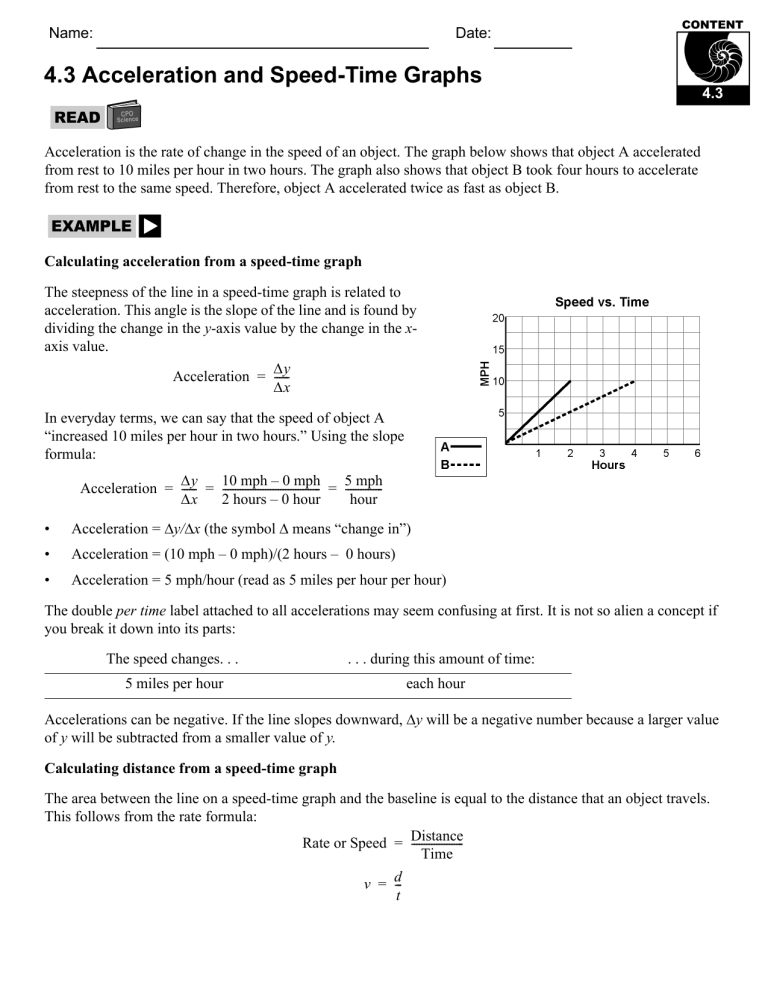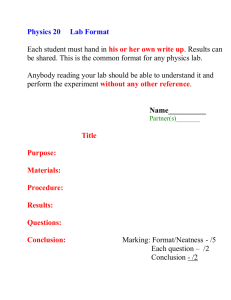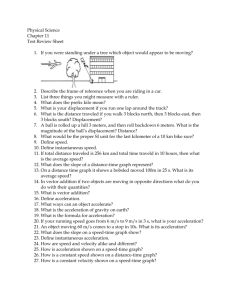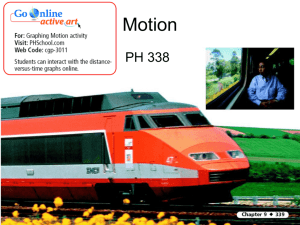
Name: Date: 4.3 Acceleration and Speed-Time Graphs 4.3 Acceleration is the rate of change in the speed of an object. The graph below shows that object A accelerated from rest to 10 miles per hour in two hours. The graph also shows that object B took four hours to accelerate from rest to the same speed. Therefore, object A accelerated twice as fast as object B. Calculating acceleration from a speed-time graph The steepness of the line in a speed-time graph is related to acceleration. This angle is the slope of the line and is found by dividing the change in the y-axis value by the change in the xaxis value. Acceleration = Δy -----Δx In everyday terms, we can say that the speed of object A “increased 10 miles per hour in two hours.” Using the slope formula: mph – 0 mph- = 5-------------mphAcceleration = Δy ------ = 10 -------------------------------------Δx 2 hours – 0 hour hour • Acceleration = Δy/Δx (the symbol Δ means “change in”) • Acceleration = (10 mph – 0 mph)/(2 hours – 0 hours) • Acceleration = 5 mph/hour (read as 5 miles per hour per hour) The double per time label attached to all accelerations may seem confusing at first. It is not so alien a concept if you break it down into its parts: The speed changes. . . 5 miles per hour . . . during this amount of time: each hour Accelerations can be negative. If the line slopes downward, Δy will be a negative number because a larger value of y will be subtracted from a smaller value of y. Calculating distance from a speed-time graph The area between the line on a speed-time graph and the baseline is equal to the distance that an object travels. This follows from the rate formula: Rate or Speed = Distance --------------------Time v = d--t Page 2 of 3 Or, rewritten: vt = d miles/hour × 3 hours = 3 miles Notice how the labels cancel to produce a new label that fits the result. Here is a speed-time graph of a boat starting from one place and sailing to another: The graph shows that the sailboat accelerated between the second and third hour. We can find the total distance by finding the area between the line and the baseline. The easiest way to do that is to break the area into sections that are easy to solve and then add them together. A + B + C + D = distance • Use the formula for the area of a rectangle, A = L × W, to find areas A, B, and D. • Use the formula for finding the area of a triangle, A = l × w/2, to find area C. A + B + C + D = distance 10 miles + 5 miles + 1 mile + 21 miles = 37 miles Calculate acceleration from each of these graphs. 1. Graph 1: 2. Graph 2: 4.3 Page 3 of 3 3. Graph 3: 4.3 4. Find acceleration for segment 1 and segment 2 in this graph: 5. Calculate total distance for this graph: 6. Calculate total distance for this graph: 7. Calculate total distance for this graph:





